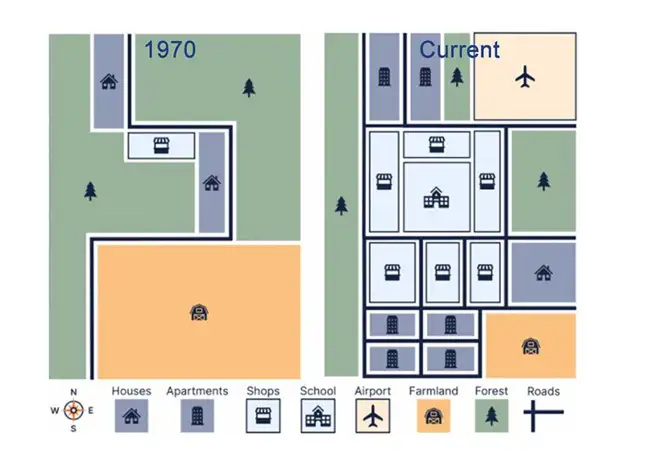IELTS Writing Task 1 on analyzing maps of Springer town from 1970 to the present moment submitted to us by our students. Join LELB Society members and send us your IELTS essays and reports for complete analysis and scoring. Watch this video on IELTS Writing Task 1 on analyzing maps https://www.youtube.com/watch?v=Ob2qUlWEVkM Write a report on analyzing maps of Springer town The maps above show the changes in the town of Springer from 1970 to the present time. Summarize the information and changes by selecting and reporting the main features, and make comparisons when necessary. Source of visual data: Academic IELTS ...
Home » IELTS Essay Writing Practice » IELTS Writing Task 1 on Analyzing Maps of Springer Town

IELTS Writing Task 1 on Analyzing Maps of Springer Town
Updated: by Armaghan Houshmand
Time to Read: 4 minutes | 698 Views | 4 Comments on IELTS Writing Task 1 on Analyzing Maps of Springer Town
Share This Post
About the Author
Armaghan Houshmand is an enthusiastic twenty-year-old student who is passionate about art, music, cinema, languages and literature. She can speak Persian and English fluently. She is currently working on her writing skills and her French and German.
Number of Posts: 26



Time spent on writing: 20 minutes.
Thank you for mentioning the spent time.
This picture illustrates the map of Springer town in the year 1970 and our current time. In the year 1970, the city included just two houses, one shop, a farmland, and two enormous jungle areas. At present time a few more shops (five more), a school, an airport, and six apartments are built in the town.
With the additional numbers of apartments and one reduction of houses between this time gap in Springer City, we can say that the population has greatly increased. The existence of an airport also explains that the percentage of travel and transportation between foreigners and locals has sharply risen. Moreover, there was not a school in 1970, unlike the current time. That means the knowledge of the importance of education has fortunately increased among people.
Furthermore, the vastness of forests has bitterly decreased. Also, the expansion of the farmland has extremely lessened. And with the additional numbers of shops and apartments, we can come to the conclusion that Springe town has transformed from a rural area to an urban one.
Thanks for sending your essay to us for evaluation. It will be assessed before your next online class.